Quantifying the Energy, Environmental, Economic, Resource Co-Benefits and Risks of GHG Emissions Abatement: The Case of Passenger Vehicles in China
Abstract
:1. Introduction
2. Methods and Data
2.1. Model Framework
2.2. Calculation Flows
2.3. Data and Assumptions
3. Results
3.1. Future Trends
3.2. Co-Benefits and Risks
4. Discussions
Author Contributions
Funding
Conflicts of Interest
References
- Rogelj, J.; den Elzen, M.; Höhne, N.; Fransen, T.; Fekete, H.; Winkler, H.; Schaeffer, R.; Sha, F.; Riahi, K.; Meinshausen, M. Paris Agreement climate proposals need a boost to keep warming well below 2 °C. Nature 2016, 534, 631–639. [Google Scholar] [CrossRef] [PubMed] [Green Version]
- IPCC. Climate Change 2014: Mitigation of Climate Change; Intergovernmental Panel on Climate Change: Geneva, Switzerland; Cambridge University Press: Cambridge, UK, 2014. [Google Scholar]
- Dong, H.; Dai, H.; Dong, L.; Fujita, T.; Geng, Y.; Klimont, Z.; Inoue, T.; Bunya, S.; Fujii, M.; Masui, T. Pursuing air pollutant co-benefits of CO2 mitigation in China: A provincial leveled analysis. Appl. Energy 2015, 144, 165–174. [Google Scholar] [CrossRef]
- Thompson, T.M.; Rausch, S.; Saari, R.K.; Selin, N.E. A systems approach to evaluating the air quality co-benefits of US carbon policies. Nat. Clim. Chang. 2014, 4, 917–923. [Google Scholar] [CrossRef]
- West, J.J.; Smith, S.J.; Silva, R.A.; Naik, V.; Zhang, Y.; Adelman, Z.; Fry, M.M.; Anenberg, S.; Horowitz, L.W.; Lamarque, J.-F. Co-benefits of mitigating global greenhouse gas emissions for future air quality and human health. Nat. Clim. Chang. 2013, 3, 885–889. [Google Scholar] [CrossRef] [PubMed] [Green Version]
- Xie, Y.; Dai, H.; Dong, H.; Hanaoka, T.; Masui, T. Economic Impacts from PM2.5 Pollution-Related Health Effects in China: A Provincial-Level Analysis. Environ. Sci. Technol. 2016, 50, 4836–4843. [Google Scholar] [CrossRef] [PubMed]
- Habib, K.; Wenzel, H. Exploring rare earths supply constraints for the emerging clean energy technologies and the role of recycling. J. Clean. Prod. 2014, 84, 348–359. [Google Scholar] [CrossRef]
- Simon, B.; Ziemann, S.; Weil, M. Potential metal requirement of active materials in lithium-ion battery cells of electric vehicles and its impact on reserves: Focus on Europe. Resour. Conserv. Recycl. 2015, 104(Part A), 300–310. [Google Scholar] [CrossRef]
- Hao, H.; Geng, Y.; Li, W.; Guo, B. Energy consumption and GHG emissions from China’s freight transport sector: Scenarios through 2050. Energy Policy 2015, 85, 94–101. [Google Scholar] [CrossRef]
- Hao, H.; Geng, Y.; Sarkis, J. Carbon footprint of global passenger cars: Scenarios through 2050. Energy 2016, 101, 121–131. [Google Scholar] [CrossRef]
- Hao, H.; Geng, Y.; Wang, H.; Ouyang, M. Regional disparity of urban passenger transport associated GHG (greenhouse gas) emissions in China: A review. Energy 2014, 68, 783–793. [Google Scholar] [CrossRef]
- Hao, H.; Liu, Z.; Zhao, F.; Li, W.; Hang, W. Scenario analysis of energy consumption and greenhouse gas emissions from China’s passenger vehicles. Energy 2015, 91, 151–159. [Google Scholar] [CrossRef]
- Hao, H.; Wang, H.; Ouyang, M. Fuel conservation and GHG (Greenhouse gas) emissions mitigation scenarios for China’s passenger vehicle fleet. Energy 2011, 36, 6520–6528. [Google Scholar] [CrossRef]
- Hao, H.; Wang, H.; Ouyang, M. Fuel consumption and life cycle GHG emissions by China’s on-road trucks: Future trends through 2050 and evaluation of mitigation measures. Energy Policy 2012, 43, 244–251. [Google Scholar] [CrossRef]
- CAAM. China Automotive Industry Yearbook 2016; China Association of Automobile Manufacturers: Beijing, China, 2017. [Google Scholar]
- NBS. China Statistical Yearbook 2016; National Bureau of Statistics: Beijing, China, 2017.
- iCET. China Passenger Vehicle Fuel Consumption Development Annual Report 2016; Innovation Center for Energy and Transportation: Beijing, China, 2017. [Google Scholar]
- MIIT. Database for Automobile Fuel Consumption of China; Ministry of Industry and Information Technology: Beijing, China, 2017.
- SAE-China. Technology Roadmap for Energy-Saving and New Energy Vehicles; Chinese Society of Automotive Engineers: Beijing, China, 2016. [Google Scholar]
- Hao, H.; Cheng, X.; Liu, Z.; Zhao, F. Electric vehicles for greenhouse gas reduction in China: A cost-effectiveness analysis. Transp. Res. Part D Transp. Environ. 2017, 56, 68–84. [Google Scholar] [CrossRef]
- Hao, H.; Qiao, Q.; Liu, Z.; Zhao, F.; Chen, Y. Comparing the life cycle greenhouse gas emissions from vehicle production in China and the USA: Implications for targeting the reduction opportunities. Clean Technol. Environ. Policy 2017, 19, 1509–1522. [Google Scholar] [CrossRef]

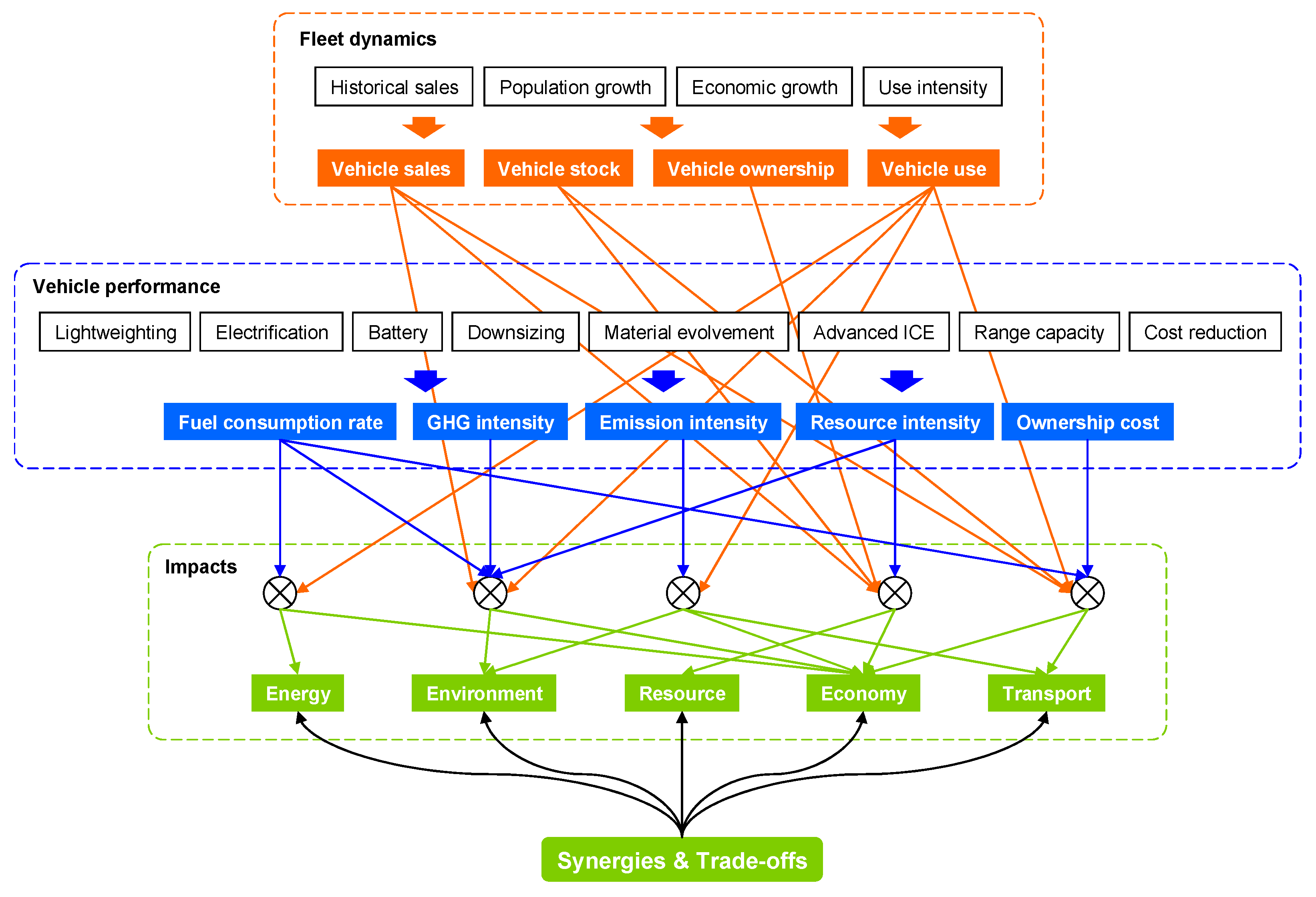
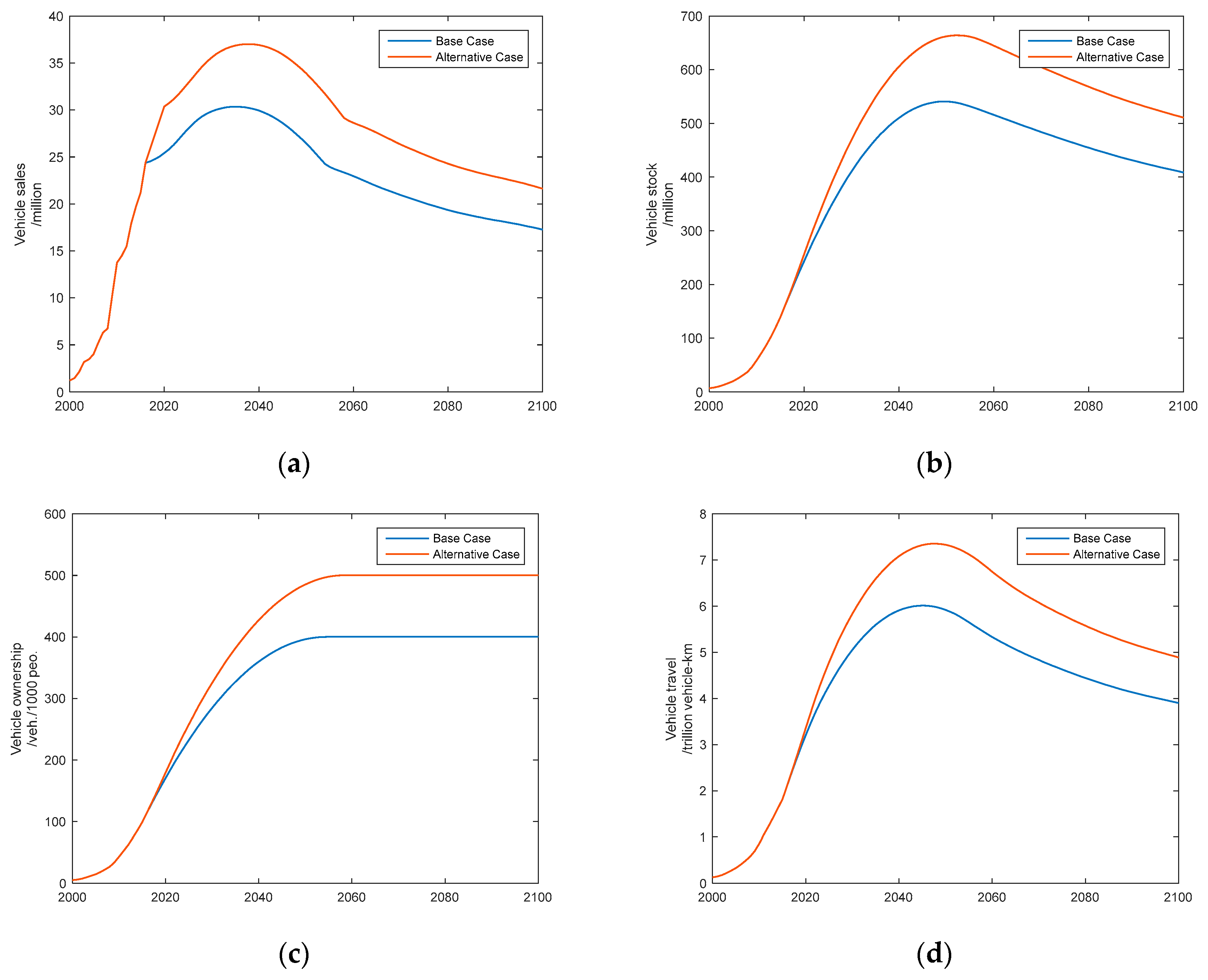
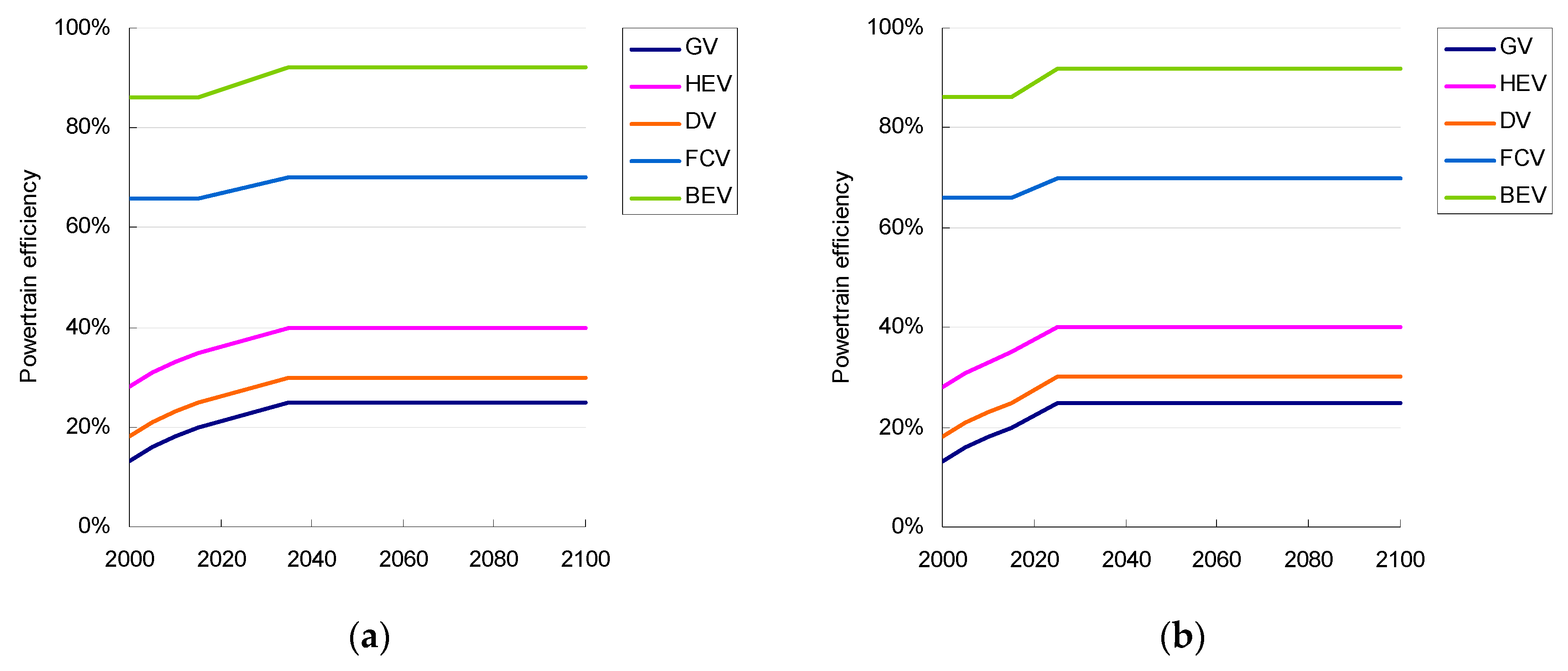
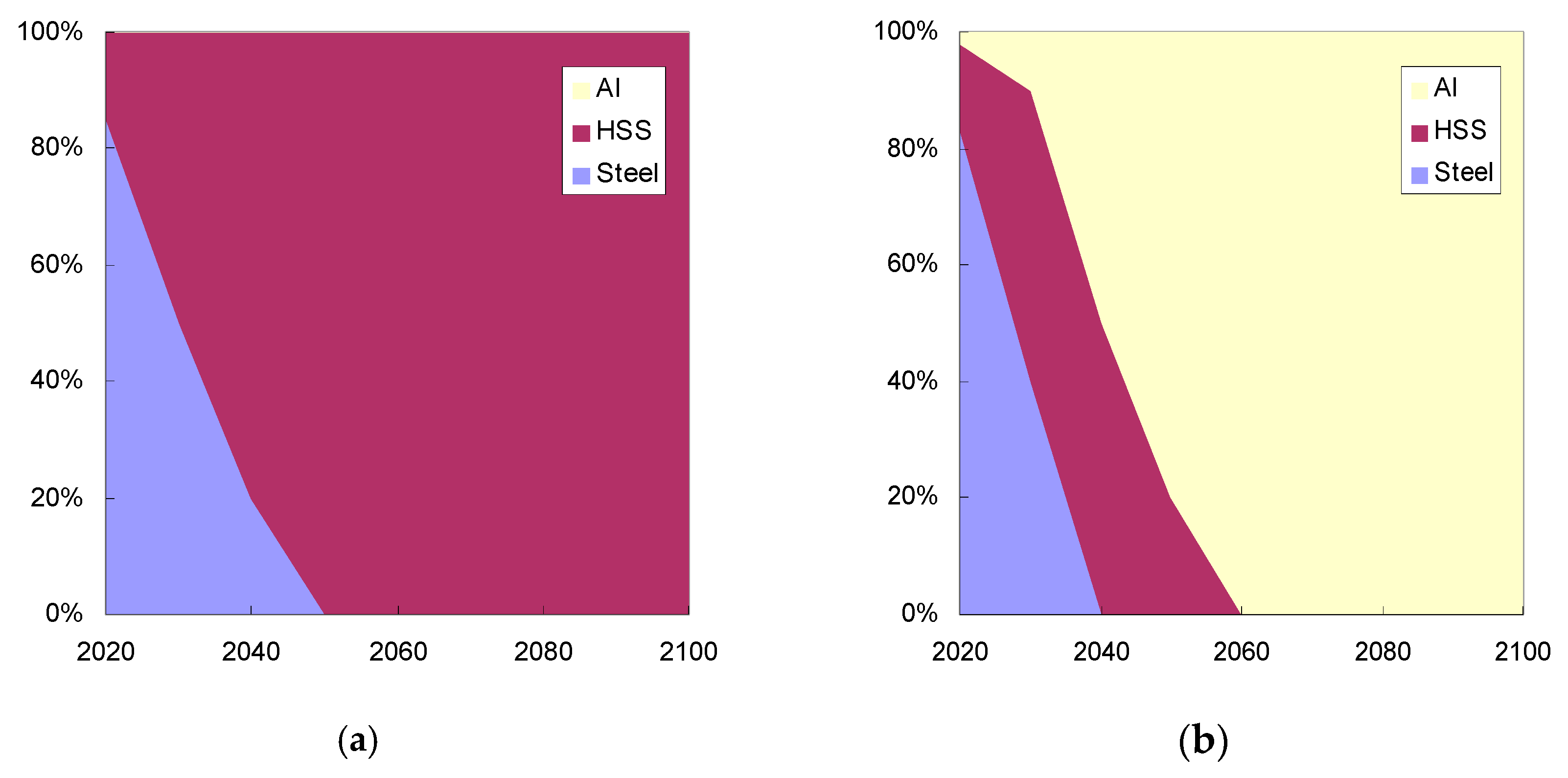
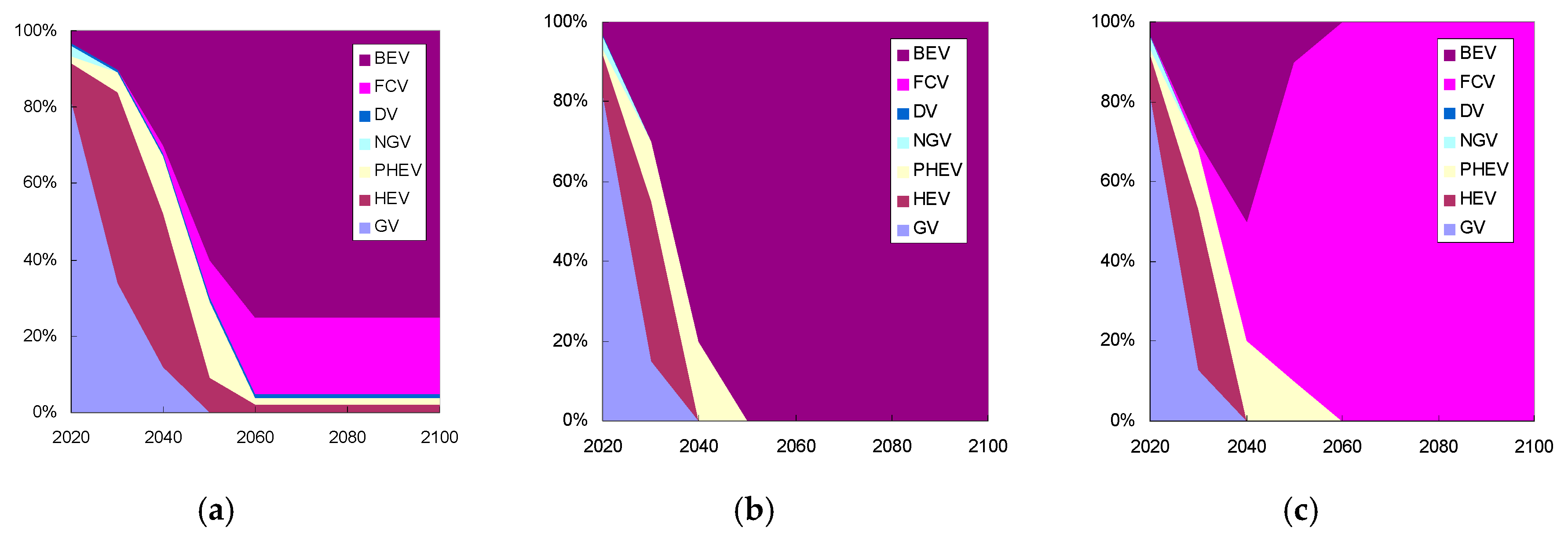

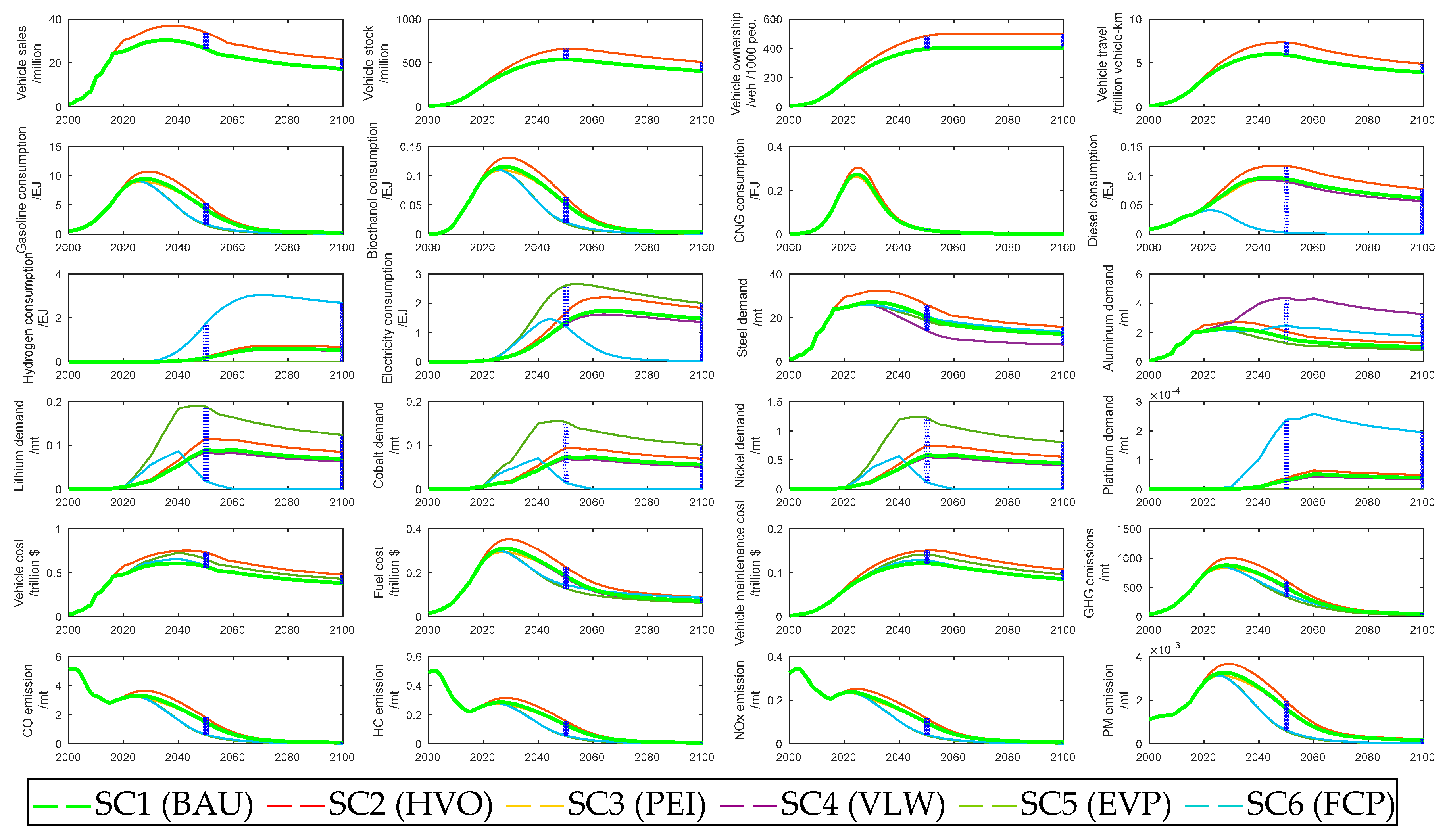
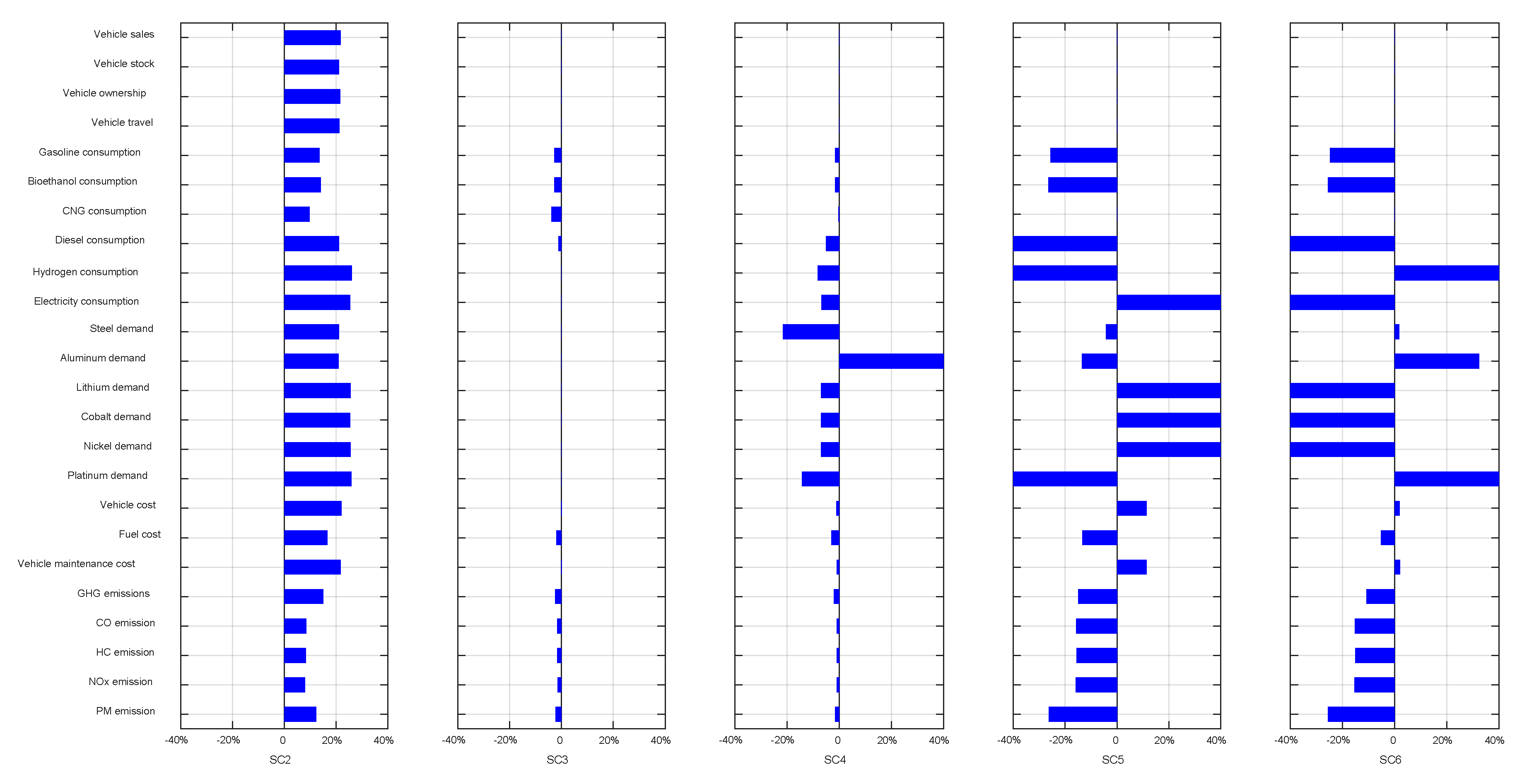
| SC1 (BAU) | SC2 (HVO) | SC3 (PEI) | SC4 (VLW) | SC5 (EVP) | SC6 (FCP) | |
|---|---|---|---|---|---|---|
| Vehicle sales | BC | AC | BC | BC | BC | BC |
| Energy-efficient technology deployment | BC | BC | AC | BC | BC | BC |
| Lightweighting technology deployment | BC | BC | BC | AC | BC | BC |
| Advanced vehicle deployment | BC | BC | BC | BC | AC1 | AC2 |
| EV all-electric range | BC | BC | BC | BC | AC | BC |
© 2019 by the authors. Licensee MDPI, Basel, Switzerland. This article is an open access article distributed under the terms and conditions of the Creative Commons Attribution (CC BY) license (http://creativecommons.org/licenses/by/4.0/).
Share and Cite
Hao, H.; Liu, F.; Sun, X.; Liu, Z.; Zhao, F. Quantifying the Energy, Environmental, Economic, Resource Co-Benefits and Risks of GHG Emissions Abatement: The Case of Passenger Vehicles in China. Sustainability 2019, 11, 1344. https://doi.org/10.3390/su11051344
Hao H, Liu F, Sun X, Liu Z, Zhao F. Quantifying the Energy, Environmental, Economic, Resource Co-Benefits and Risks of GHG Emissions Abatement: The Case of Passenger Vehicles in China. Sustainability. 2019; 11(5):1344. https://doi.org/10.3390/su11051344
Chicago/Turabian StyleHao, Han, Feiqi Liu, Xin Sun, Zongwei Liu, and Fuquan Zhao. 2019. "Quantifying the Energy, Environmental, Economic, Resource Co-Benefits and Risks of GHG Emissions Abatement: The Case of Passenger Vehicles in China" Sustainability 11, no. 5: 1344. https://doi.org/10.3390/su11051344
APA StyleHao, H., Liu, F., Sun, X., Liu, Z., & Zhao, F. (2019). Quantifying the Energy, Environmental, Economic, Resource Co-Benefits and Risks of GHG Emissions Abatement: The Case of Passenger Vehicles in China. Sustainability, 11(5), 1344. https://doi.org/10.3390/su11051344





